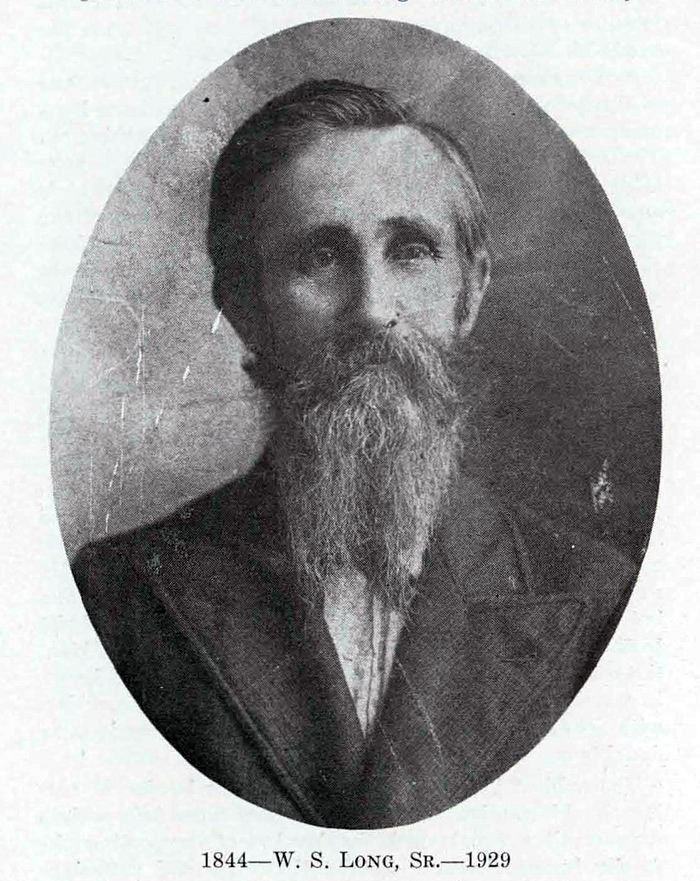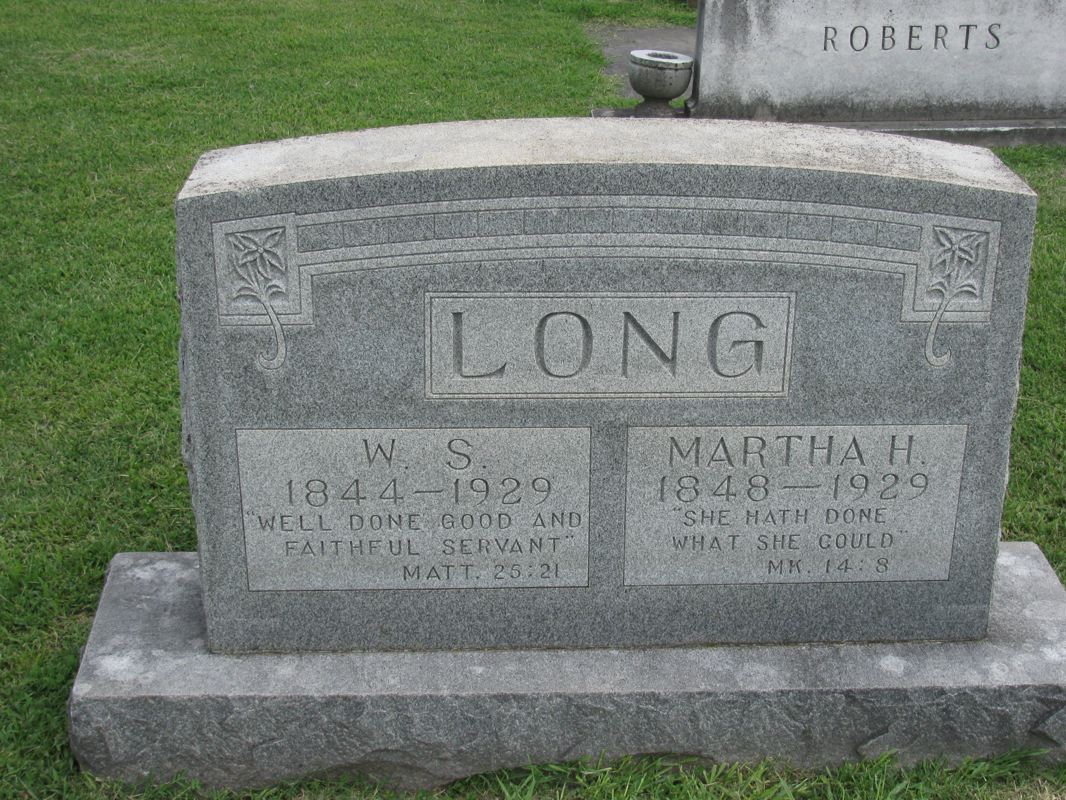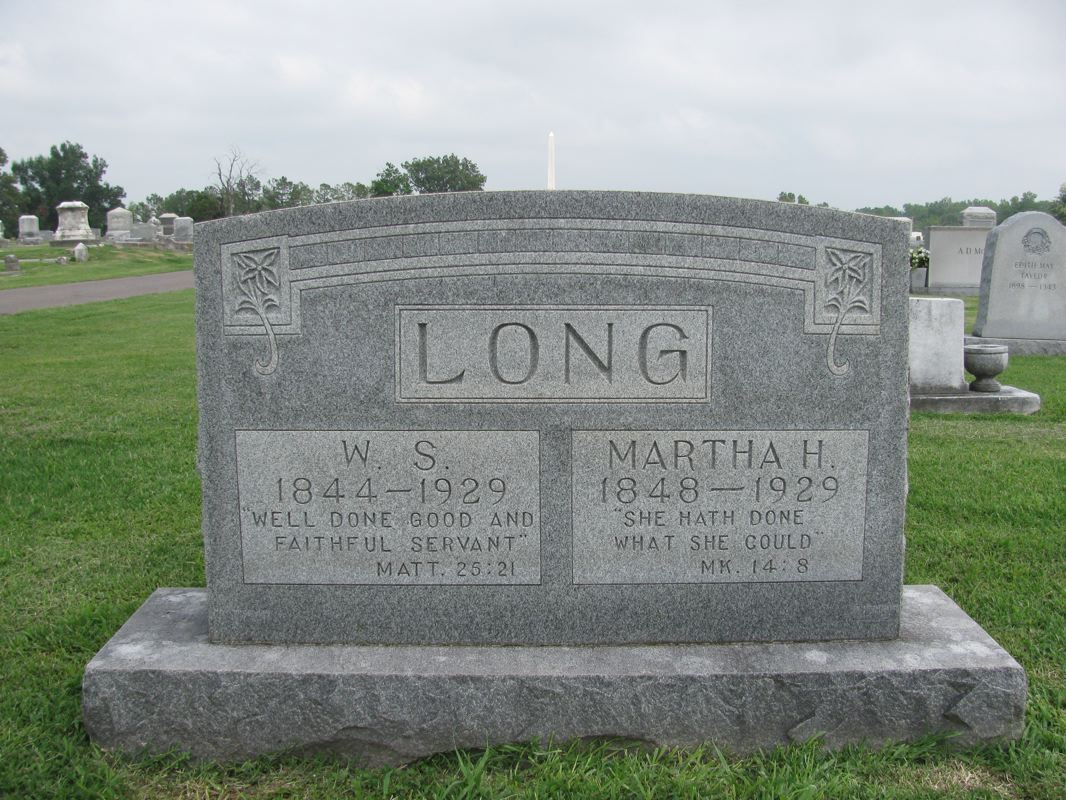William Slaughter Long, Sr.
1844-1929
![]()
Biographical Sketch on the life of William S. Long, Sr.
Many great men have lived in comparative obscurity— that is, they were great according to the true standard of greatness. The elements of greatness are nobility of heart, faithfulness to lofty ideals, persistent integrity to the mission of life, and a determination to honor and glorify God. Any one—every one—who has these qualities becomes great in the sight of God. One may be born in the remote rural sections of the country and live un known to the world, save in his own immediate sphere, and yet be great. The subject of this sketch may belong to this class.
William Slaughter Long was born near Hopkinsville, Ky., on July 5, 1844. His ancestors were among the first families of Virginia, and they were descendants from the noted Slaughters and Longs of St. Mark’s Parish, Culpeper County. His grandfather, W. S. Long, was one of the pioneers of Kentucky. He came to Southern Kentucky about the time of the death of George Washington.
The father of the subject of this sketch was born soon after the removal to Kentucky. He was born in what is now Todd County. His father was known as one of the first settlers in that part of West Kentucky. In those days school advantages were meager, and gospel preachers were unknown to the inhabitants of the State at that time.
About 1850, Alexander Campbell made a visit to that section of Kentucky. He preached at Hopkinsville, and remained there for some days, preaching daily to good audiences. The father of Brother Long, together with his wife, rode horseback several miles to hear Mr. Campbell preach. They learned the way of the Lord from Mr. Campbell and soon became obedient to the faith. He and his good wife were very zealous and determined to build up the cause of Christ in their own community. He owned n sawmill, and he sawed and dressed lumber and built the first house of worship for the Disciples of Christ in Todd County. This was about six miles from Elkton, the county seat. Soon after the congregation had begun to worship in the meetinghouse he died, leaving a widow with one son about eleven years of age and some daughters.
The subject of this sketch soon felt the burden of caring for his mother and sisters. They were left with a very small support, and the burden of supporting the family became heavy. Amidst the trials and sufferings incident to life in that section Brother Long grew to man hood. His mother taught him the way of the Lord, and when he was about sixteen years of age he obeyed the gospel, being baptized by Brother James Mobley. Brother Long began the Christian life with all earnestness, consecrating himself to the Lord in such a way that he developed rapidly in the Christian life, and soon became strong in the Lord and in the strength of his might. At that time persecution was severe, but he endured the persecution and hardships that came his way without com plaint. He knew that if he would live godly in Christ Jesus he must suffer persecution, and he gladly suffered in the name of Christ. Many times young people who were not in sympathy with the simple teachings of the New Testament would revile him and attempt to discourage him, but this only made him the stronger in the service of God.
Brother Long was reared on the farm. He loved Mother Nature and he loved the cultivation of the soil. He spent his life on the farm, but he gave attention to the preaching of the gospel as opportunity was offered him. At the age of twenty-one he moved from Kentucky to Union City, Tenn. Here he spent the remainder of his life, living there sixty-four years. His sojourn here was spent on his farm. Soon after moving to Union City he met Miss Martha A. Harper, who became his wife. She had heard the old gospel story in its simplicity preached by Isaac Sewell, and she was baptized into the one body and continued faithful to the Lord. She was a great help to Brother Long, not only in rearing their family and training their children, but also in helping him live the Christian life. Many a time when he was discouraged and weary under the heavy burden, which he carried through life, she encouraged him and helped to hear the burden. She strengthened him in his Christian faith and encouraged him in preaching the gospel.
Brother Long was not classed among the “big” preachers, but he knew the truth and loved it and could preach it with great simplicity and persuasiveness. The greater portion of his labors as a preacher was done in a quiet way and at mission points, consequently his fame as a preacher was not so extensive as some other preachers; but who would say that his work was not as great in the sight of God and in the kingdom of our Lord as that of those whose fame was spread abroad and heralded through the religious press? In 1884, there was hut one congregation in Obion County. This one was at Union City. The church was of “one heart and one soul” and was filling its mission in humility. Soon, however, some became dis satisfied with God’s simple law of work and worship and began to introduce innovations into the church. Among these innovations came the use of an instrument in at tempting to praise God. The instrument was introduced ii: the church at Union City over the protest of those who had built the house and sacrificed to establish the congregation there. Those who would not indorse these innovations were driven out and forced to worship in the courthouse. Of course those who introduced the innovations were more popular in the eyes of the world and the denominations around them than were those who con tended earnestly in humility for the Lord’s plan of work and worship. Brother Long took his stand with those who desired to worship “as it is written.” He was willing to suffer the persecution and meekly submitted to the inconvenience to which he and others were subjected for the sake of the cause of Christ. He could have gone with the others and worshiped in the house with the innovations and had an easier time; but he had firm convictions, and he stood courageously by those convictions. He had been trained to hardship and had suffered many persecutions; so he did not hesitate at this time to make the sacrifice and lead those who desired to continue faithful in the worship of the Lord.
After the separation of the faithful disciples from those who introduced the innovation, he began to work with greater zeal for the church. He joined forces with the lamented John R. Williams and Brother Mills, together with others in Obion County, and soon congregations began to be planted throughout the county. Brother Long went to the neglected places and encouraged the faithful few in all of thee congregations. Brother Williams, like Paul, planted. and Brother Long, like Apollos, watered, but it was God who gave the increase; so many churches were established. Within thirty years there were eighteen congregations in Obion County.
Brother Long was too feeble in the latter days of his life to do much preaching. He traveled among the churches and encouraged members to read the Bible and the Gospel Advocate. He died on December 28, 1929. He left a number of children who are faithful to the Lord. Among his children is our beloved brother, W. S. Long, now of Chicago, Ill., who is a faithful gospel preacher. If Brother Long had done no more for the world and for the church than to give Brother W. S. Long to the church, he would have made a great contribution.
Biographical Sketches of Gospel Preachers, H. Leo Boles, c. 1932, Gospel Advocate Company, pages 336-341
![]()
Directions To The Grave of W.S. Long
W.S. Long is buried in the Eastview Cemetery AKA: Union City Cemetery, in Union City, Tennessee. From I-40 in West Tennessee, get off at Exit 80 and head north on Hwy. 45 toward Humbolt. Hwy. 45W will split off from Hwy. 45E. Take Hwy 45W/5 through Humbolt. Continue north another 45 miles to Union City. In Union City, turn right on Reelfoot Ave. Go about a mile and turn left on S Miles Ave. The cemetery will be on the right. The grave is in Lot No 5 Section C
GPS Location
36.420954,-89.039732
![]()
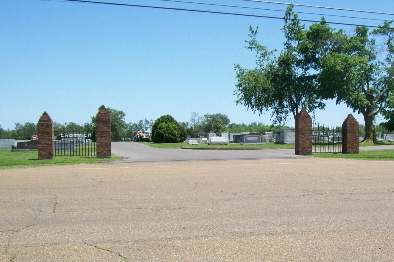
Entrance to Eastview Cemetery
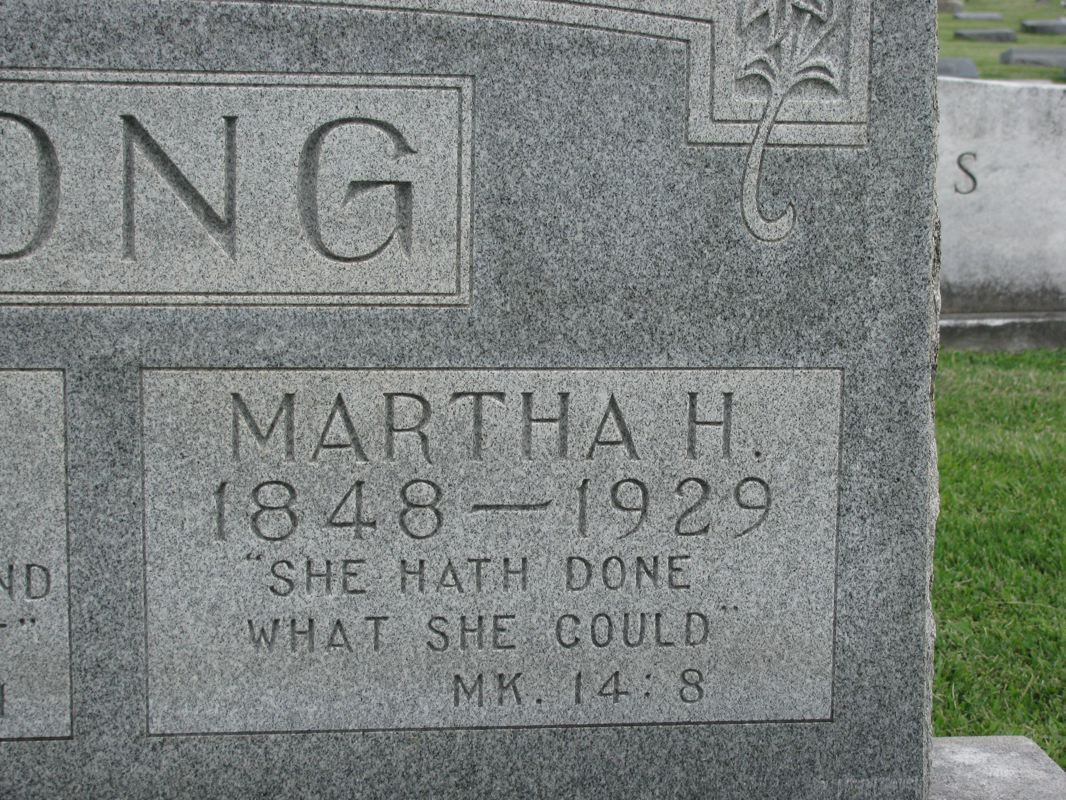
Martha H.
1848-1929
"She Hath Done
What She Could"
Mk. 14:8
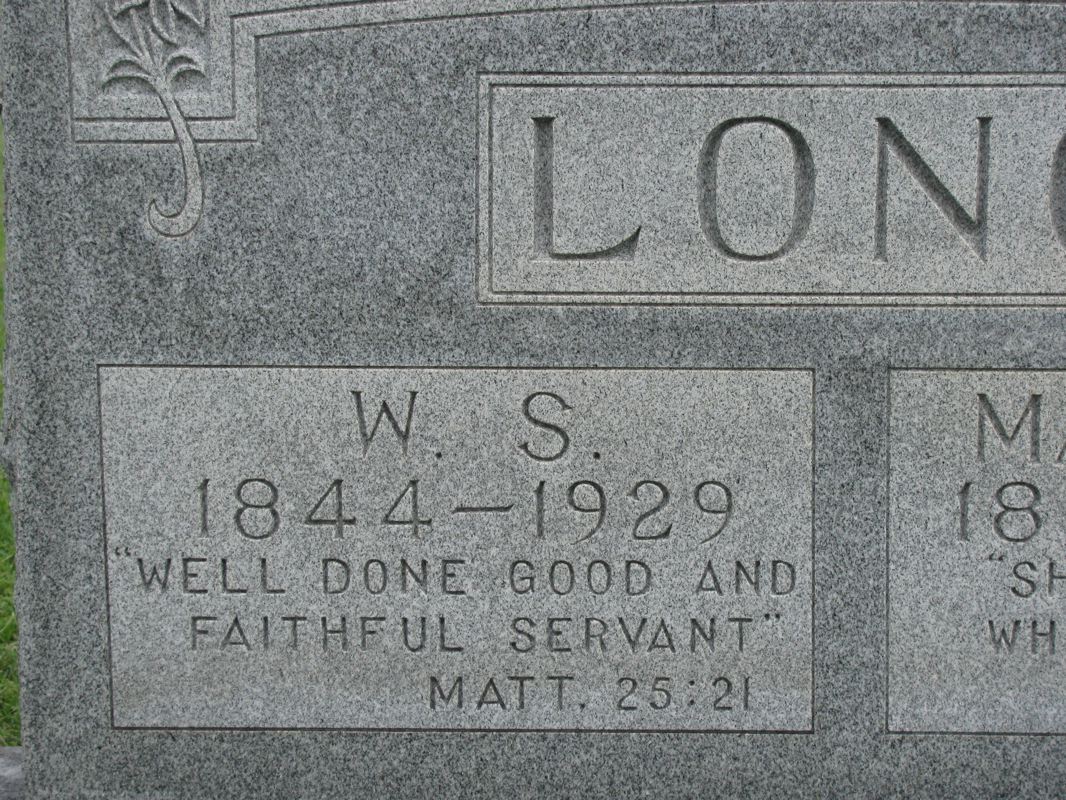
W.S.
1844-1929
"Well Done Good And
Faithful Servant"
Matt. 25:21
![]()
Photos Taken by Tom Atkinson, July, 2011
Courtesy of Scott Harp
www.TheRestorationMovement.com
![]()
